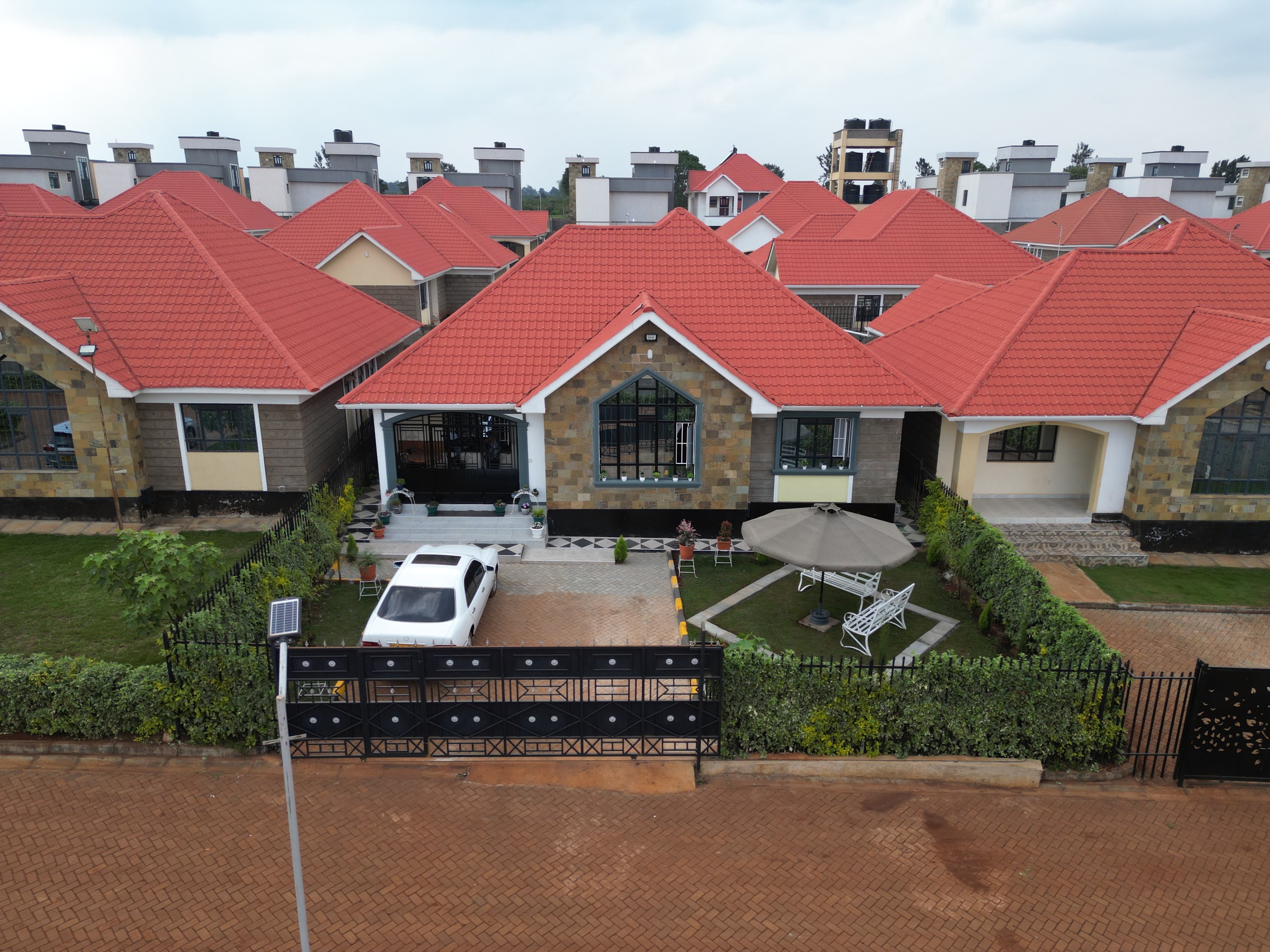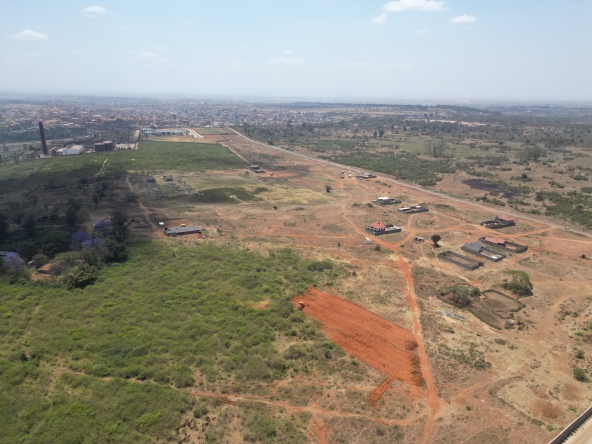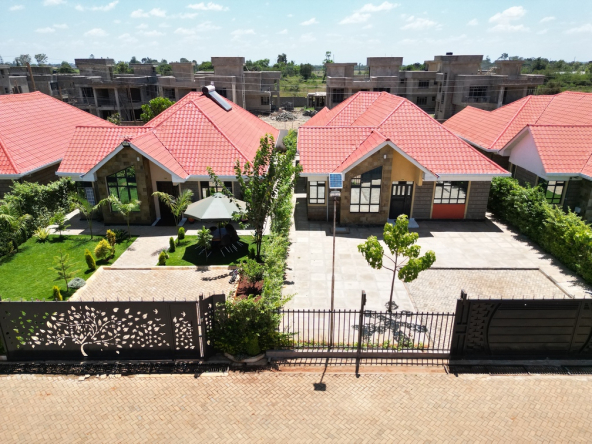The real estate market in Kenya has witnessed significant transformations in recent years, especially with the government’s efforts to make homeownership more accessible. However, despite these positive strides, challenges persist, especially for first-time homebuyers. Mortgage financing plays a crucial role in enabling individuals to purchase homes, yet it remains a complex and often inaccessible process for many Kenyans. This article delves into the evolving mortgage landscape in Kenya, examines government policies affecting the mortgage industry, and highlights the challenges faced by first-time homebuyers. Additionally, it explores potential solutions and the future trajectory of real estate financing in Kenya.
The Evolving Mortgage Landscape in Kenya
In 2021, total mortgage uptake in Kenya stood at Ksh. 286 billion. However, the mortgage market experienced some fluctuations, with outstanding mortgage loans declining in 2022 before recovering in 2023. By the end of 2023, the number of mortgage accounts had increased by 8% to 30,015, up from 27,786 in December 2022. Similarly, the total value of outstanding mortgage loans grew to KES 281.5 billion, marking a 7.5% rise from 2022, though still slightly below 2021 levels.
.The mortgage landscape is evolving with more financial institutions offering diverse products to cater to a broader market. Traditionally, mortgages in Kenya were primarily offered by banks, with most mortgages featuring relatively high interest rates, typically between 12% and 14% per annum. However, there is a noticeable shift toward more flexible mortgage products. For example, some banks have begun offering lower interest rates and longer repayment periods, with some extending the loan term to up to 25 years (Kariuki, 2020). These products are designed to make homeownership more affordable, especially for low and middle-income earners.
Moreover, technological advancements are playing an essential role in transforming the mortgage industry in Kenya. The rise of mobile banking and digital platforms has made it easier for people to access mortgage information and apply for loans. Financial institutions are increasingly adopting digital platforms that allow for quicker mortgage processing and disbursements. For example, Safaricom’s M-Shwari mobile banking platform, in collaboration with the National Commercial Bank of Africa (NCBA), allows users to access loans without the need to visit a physical bank (Chabeda, 2020). This level of convenience has made it easier for individuals, especially young professionals, to access home financing.
Key Factors Affecting Mortgage Financing in Kenya
| Factor | Current State | Impact on Homebuyers | Future Trends |
|---|---|---|---|
| Mortgage Interest Rates | Typically between 12% and 14% per annum. | High rates make mortgages less affordable for most Kenyans. | Expected to decrease as competition increases and inflation stabilizes. |
| Down Payments | 10% to 30% of property value required. | Large down payment requirements limit accessibility for low-income buyers. | More affordable options may emerge through government programs. |
| Loan Terms | Generally 15 to 25 years. | Longer terms can reduce monthly payments but increase total interest paid. | Possibility of extended repayment periods as lenders adjust products. |
| Mortgage Products Available | Primarily fixed-rate and some variable-rate loans. | Limited options for those seeking flexibility or lower initial payments. | New, flexible mortgage products, possibly tailored for younger buyers, may emerge. |
| Government Policies | Affordable housing initiatives, tax exemptions for developers, interest rate caps. | Policies support low-income buyers but are still limited by housing supply. | More initiatives likely as the Big Four Agenda continues, targeting broader affordability. |
| Financial Institutions Involved | Banks, SACCOs, and microfinance institutions. | Banks offer high interest rates, while SACCOs and microfinance institutions offer more accessible terms. | Increased collaboration among institutions to provide affordable housing finance. |
Government Policies Impacting Mortgage Financing
The Kenyan government has implemented several policies aimed at stimulating the real estate market and making mortgages more accessible. One of the flagship initiatives is the affordable housing program, a key pillar of President Uhuru Kenyatta’s Big Four Agenda. The program sought to deliver 500,000 affordable housing units by 2022, with a focus on low- to middle-income earners (Government of Kenya, 2017). The initiative is designed to address the housing deficit in Kenya, particularly in urban areas where demand for homes is high.
To encourage homeownership, the government has also introduced favorable policies for mortgage financing. For example, in 2017, the government introduced tax incentives for developers and homebuyers. Developers building affordable housing are entitled to tax exemptions on building materials, while homebuyers can benefit from reduced stamp duty on property transactions. Additionally, the government has introduced mortgage interest rate caps, limiting interest rates on housing loans to a maximum of 14% per annum (Mwangi, 2020). This policy has helped reduce the cost of borrowing for individuals looking to purchase homes.
Despite these efforts, challenges remain in fully implementing these policies, particularly for first-time homebuyers who still struggle to access affordable mortgage financing. Many developers are focused on high-end properties, while low-cost housing developments are in short supply. Additionally, there are still significant barriers to financing, including the high cost of land and infrastructure in urban areas.
Challenges Facing First-Time Homebuyers in Kenya
First-time homebuyers in Kenya face a myriad of challenges when it comes to securing a mortgage. One of the most significant hurdles is the high cost of mortgages, driven by steep interest rates. While the government’s interest rate cap has helped, the cost of borrowing remains unaffordable for many people, particularly those from low- and middle-income households. A report by the Kenya Bankers Association (KBA) noted that mortgage uptake is constrained by high interest rates and the inability of many Kenyans to meet the deposit requirements (KBA, 2021).
Another challenge is the stringent requirements for accessing mortgages. Most lenders require homebuyers to make a down payment of 10% to 30% of the property’s value, which is a significant barrier for many individuals, especially those in the informal sector who lack formal income documentation. For example, individuals employed in the informal sector, such as traders and small business owners, often find it difficult to meet the documentation requirements needed for a mortgage application (Mwangi, 2020).
Additionally, credit scoring remains a major issue for first-time buyers. Many Kenyans, particularly those from lower-income backgrounds, have limited or no credit histories, making it difficult for them to qualify for loans. Even when loans are accessible, the terms are often not favorable, leaving many individuals unable to secure financing for home purchases.
Furthermore, there is the issue of the high cost of land in major urban areas, particularly in Nairobi, where prices continue to rise at an alarming rate. The scarcity of affordable land options makes it difficult for developers to build affordable homes, further exacerbating the affordability issue for first-time buyers.
The Role of Financial Institutions and Mortgage Providers
Financial institutions play a central role in addressing the challenges facing first-time homebuyers in Kenya. Banks, Savings and Credit Cooperative Organizations (SACCOs), and microfinance institutions are key players in providing mortgage loans. SACCOs, in particular, have been instrumental in providing affordable mortgage options to their members. SACCOs are community-based financial institutions that often offer lower interest rates and more flexible lending criteria compared to commercial banks.
Additionally, microfinance institutions have emerged as an important source of housing finance for individuals who may not meet the stringent requirements set by commercial banks. These institutions offer smaller loans with more lenient qualification requirements, which are especially helpful for individuals in the informal sector. However, microfinance institutions often charge higher interest rates compared to commercial banks, which can still pose challenges for borrowers (Mugweru, 2019).
The Future of Real Estate Financing in Kenya
Looking to the future, the real estate financing sector in Kenya is expected to evolve further as demand for housing continues to grow. Several trends are likely to shape the mortgage landscape:
- Lower Mortgage Interest Rates: As competition in the mortgage market intensifies, financial institutions may lower their interest rates to attract more customers. Additionally, as inflation rates stabilize and the economy grows, mortgage rates are expected to become more affordable.
- Growth of Alternative Financing Models: With the increasing number of young professionals entering the market, alternative financing models such as rent-to-own schemes, crowdfunding, and partnerships with developers may become more popular. These models offer flexibility and make homeownership more attainable.
- Government Initiatives: The government’s continued support for affordable housing projects is expected to result in more housing options for first-time buyers. Further tax incentives and reductions in the cost of land will help lower the overall cost of purchasing a home.
- Digital Transformation: The continued adoption of digital platforms and mobile banking will revolutionize the mortgage application and approval process, making homeownership more accessible for people across Kenya.
The future of real estate financing in Kenya holds great promise, but significant challenges remain, especially for first-time homebuyers. While government initiatives and favorable mortgage products are helping to make homeownership more accessible, high interest rates, stringent qualification requirements, and the cost of land continue to pose significant barriers. Moving forward, it is essential that financial institutions, developers, and the government collaborate to create more inclusive solutions that address these challenges and support the growing demand for affordable housing in Kenya.
References
- Chabeda, S. (2020). The role of mobile banking in Kenya’s mortgage industry. The Standard.
- Central Bank of Kenya (CBK). (2021). Mortgage industry report.
- Government of Kenya. (2017). The Big Four Agenda: Affordable Housing Plan.
- Kariuki, M. (2020). Trends in mortgage lending in Kenya. Business Daily.
- Kenya Bankers Association (KBA). (2021). Mortgage uptake and affordability in Kenya.
- Mugweru, A. (2019). The role of SACCOs in financing homeownership in Kenya. Journal of African Real Estate.
- Mwangi, G. (2020). Challenges facing first-time homebuyers in Kenya. Nairobi Business Review.
🏡 Looking for Your Dream Home in Nairobi?
At Willstone Homes, we make homeownership affordable, stress-free, and rewarding. Whether you’re looking for a modern home in a secure gated community or a profitable real estate investment, we have the perfect property for you.
✅ Quality Homes with elegant finishes
✅ Flexible Payment Plans tailored for you
✅ Prime Locations in Nairobi and beyond
✅ Hassle-Free Ownership with clean title deeds
📞 Call/WhatsApp: +254 711 082 011
🌐 Visit: www.willstonehomes.ke
🏠 Secure your dream home today with Willstone Homes – Where Quality Meets Affordability! 🔑✨




